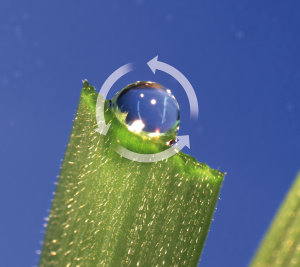
With many golf clubs looking at essential autumn renovation over the coming weeksC Technical Manager, Dr Simon Watson, explains why Fusarium poses such a threat and provides some topical tips to minimise risk.
Renovation programmes on golf courses this autumn could trigger disease attacks. A pro-active treatment with Heritage Maxx could protect turf through the most vulnerable high risk period.
Greenkeepers and golf course managers are being urged to protect turf from disease triggered by end of season renovation works. With current wet weather conditions highly conducive to Fusarium spread, pro-active fungicide applications before starting work could minimise the risk of extensive turf damage.
Syngenta Technical Manager, Dr Simon Watson, warns that hollow coring and deep aeration, for example, will improve air exchange and enhance microbial activity, that in turn results in a the release of nutrient and a flush in growth. This can make the turf more susceptible to Fusarium attack. Furthermore, if the turf is then smothered in top dressing, it acts as an ‘insulator’ creating conditions ideal for disease development. The action of aeration and cutting also places the turf under some stress and damages leaf blades, leaving individual plants exposed to infection.
Since renovation weeks are often fixed in golf club diaries, there’s little flexibility for greenkeepers to adjust their programmes according to weather conditions. “Applying Heritage Maxx a few days before planned renovations is a sensible precaution to prevent infection,” advises Dr Watson. “It will be rapidly absorbed by leaves to ensure maximum protection against a broad spectrum of turf diseases, until plants have recovered from any damage caused through renovation process and the high risk conditions have receded.”
Dr Watson highlights that the active recycling of Heritage Maxx is especially valuable in protecting turf during renovation. ”It is the only systemic fungicide with good uptake by roots, with subsequent upward movement of the active ingredient ensuring its distribution throughout the plant. Protection is thus naturally transported to any point of damage that is most at risk of infection.
“Furthermore, any Heritage Maxx active which exudates in the plant sap from cut or damaged leaves may be washed back down the plant, reabsorbed and recycled back through the leaf.” He adds that the root uptake of Heritage Maxx ensures high levels of total fungicide utilisation, when other fungicides washed off the leaf by rain or irrigation would be wasted.
Trials have shown Heritage Maxx can give up to four to six weeks protection against Fusarium Patch infection, as well as the broadest label approval of turf diseases, including Anthracnose, Brown Patch, Leaf Spot and seedling diseases that could affect turf that is being over sown during renovation this autumn.
Greenkeepers, turf managers and agronomists can predict the risk of Fusarium attack at any time by registering for the free weather and turf disease forecasting website – www.greencast.co.uk – which includes a wealth of information to help with more proactive turf management decisions.

